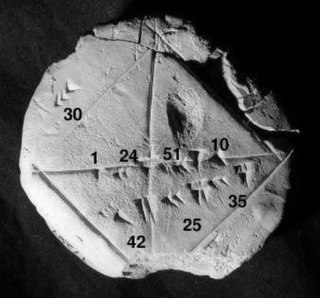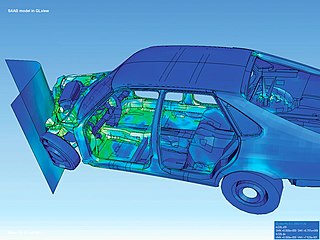Related Research Articles

Numerical analysis is the study of algorithms that use numerical approximation for the problems of mathematical analysis. It is the study of numerical methods that attempt to find approximate solutions of problems rather than the exact ones. Numerical analysis finds application in all fields of engineering and the physical sciences, and in the 21st century also the life and social sciences, medicine, business and even the arts. Current growth in computing power has enabled the use of more complex numerical analysis, providing detailed and realistic mathematical models in science and engineering. Examples of numerical analysis include: ordinary differential equations as found in celestial mechanics, numerical linear algebra in data analysis, and stochastic differential equations and Markov chains for simulating living cells in medicine and biology.

Numerical methods for ordinary differential equations are methods used to find numerical approximations to the solutions of ordinary differential equations (ODEs). Their use is also known as "numerical integration", although this term can also refer to the computation of integrals.

In mathematics, a differential equation is an equation that relates one or more unknown functions and their derivatives. In applications, the functions generally represent physical quantities, the derivatives represent their rates of change, and the differential equation defines a relationship between the two. Such relations are common; therefore, differential equations play a prominent role in many disciplines including engineering, physics, economics, and biology.
Numerical methods for partial differential equations is the branch of numerical analysis that studies the numerical solution of partial differential equations (PDEs).
In numerical analysis, a multigrid method is an algorithm for solving differential equations using a hierarchy of discretizations. They are an example of a class of techniques called multiresolution methods, very useful in problems exhibiting multiple scales of behavior. For example, many basic relaxation methods exhibit different rates of convergence for short- and long-wavelength components, suggesting these different scales be treated differently, as in a Fourier analysis approach to multigrid. MG methods can be used as solvers as well as preconditioners.
In numerical analysis, adaptive mesh refinement (AMR) is a method of adapting the accuracy of a solution within certain sensitive or turbulent regions of simulation, dynamically and during the time the solution is being calculated. When solutions are calculated numerically, they are often limited to pre-determined quantified grids as in the Cartesian plane which constitute the computational grid, or 'mesh'. Many problems in numerical analysis, however, do not require a uniform precision in the numerical grids used for graph plotting or computational simulation, and would be better suited if specific areas of graphs which needed precision could be refined in quantification only in the regions requiring the added precision. Adaptive mesh refinement provides such a dynamic programming environment for adapting the precision of the numerical computation based on the requirements of a computation problem in specific areas of multi-dimensional graphs which need precision while leaving the other regions of the multi-dimensional graphs at lower levels of precision and resolution.
In mathematics, a differential-algebraic system of equations (DAE) is a system of equations that either contains differential equations and algebraic equations, or is equivalent to such a system.
Heinz-Otto Kreiss was a German mathematician in the fields of numerical analysis, applied mathematics, and what was the new area of computing in the early 1960s. Born in Hamburg, Germany, he earned his Ph.D. at Kungliga Tekniska Högskolan in 1959. Over the course of his long career, Kreiss wrote a number of books in addition to the purely academic journal articles he authored across several disciplines. He was professor at Uppsala University, California Institute of Technology and University of California, Los Angeles (UCLA). He was also a member of the Royal Swedish Academy of Sciences. At the time of his death, Kreiss was a Swedish citizen, living in Stockholm. He died in Stockholm in 2015, aged 85.
Anatoly Mykhailovych Samoilenko was a Ukrainian mathematician, an Academician of the National Academy of Sciences of Ukraine, the Director of the Institute of Mathematics of the National Academy of Sciences of Ukraine.

Mesh generation is the practice of creating a mesh, a subdivision of a continuous geometric space into discrete geometric and topological cells. Often these cells form a simplicial complex. Usually the cells partition the geometric input domain. Mesh cells are used as discrete local approximations of the larger domain. Meshes are created by computer algorithms, often with human guidance through a GUI, depending on the complexity of the domain and the type of mesh desired. A typical goal is to create a mesh that accurately captures the input domain geometry, with high-quality (well-shaped) cells, and without so many cells as to make subsequent calculations intractable. The mesh should also be fine in areas that are important for the subsequent calculations.
In mathematics, a collocation method is a method for the numerical solution of ordinary differential equations, partial differential equations and integral equations. The idea is to choose a finite-dimensional space of candidate solutions and a number of points in the domain, and to select that solution which satisfies the given equation at the collocation points.

Leslie Fox was a British mathematician noted for his contribution to numerical analysis.

The finite element method (FEM) is a popular method for numerically solving differential equations arising in engineering and mathematical modeling. Typical problem areas of interest include the traditional fields of structural analysis, heat transfer, fluid flow, mass transport, and electromagnetic potential.

Phillip Colella is an American applied mathematician and a member of the Applied Numerical Algorithms Group at the Lawrence Berkeley National Laboratory. He has also worked at Lawrence Livermore National Laboratory. He is known for his fundamental contributions in the development of mathematical methods and numerical tools used to solve partial differential equations, including high-resolution and adaptive mesh refinement schemes. Colella is a member of the US National Academy of Sciences.
Bertil Gustafsson is a Swedish applied mathematician and numerical analyst. He is currently a Professor emeritus in the Department of Information Technology at Uppsala University, Sweden. Gustafsson is known for his work in numerical methods for time-dependent partial differential equations and its applications in fluid dynamics. He is the G in GKS (Gustafsson–Kreiss–Sundstrom) theory for initial-boundary value problems which discusses the stability criterion for numerical approximations of initial–boundary value problems. Gustafsson has also authored a couple of books on the topic numerical methods applied to PDE.

Robert Edmund O'Malley Jr. is an American mathematician.
Peter Onumanyi is a Nigerian mathematician. He was born in 1951 in Okene, Nigeria. A graduate of the University of Ibadan and Imperial College, London, he is a fellow and past president of the Mathematical Association of Nigeria. He has been the Head of the Mathematics department, Dean of the Faculty of Natural Sciences, and Deputy Vice-chancellor (Academic) of the University of Jos.

In mathematics, an ordinary differential equation (ODE) is a differential equation (DE) dependent on only a single independent variable. As with other DE, its unknown(s) consists of one function(s) and involves the derivatives of those functions. The term "ordinary" is used in contrast with partial differential equations which may be with respect to more than one independent variable.
Probabilistic numerics is an active field of study at the intersection of applied mathematics, statistics, and machine learning centering on the concept of uncertainty in computation. In probabilistic numerics, tasks in numerical analysis such as finding numerical solutions for integration, linear algebra, optimization and simulation and differential equations are seen as problems of statistical, probabilistic, or Bayesian inference.
References
- ↑ "Numerical Solution of Boundary Value Problems for Ordinary Differential Equations" . Retrieved 28 February 2013.
- ↑ Quarteroni, Alfio (2011). "Review of Adaptive Moving Mesh Methods". SIAM Review. 53 (4): 802–805. doi:10.1137/SIREAD000053000004000799000001.
- ↑ "SIAM Fellows: Class of 2009". Society of Industrial and Applied Mathematicians. Retrieved 28 February 2013.